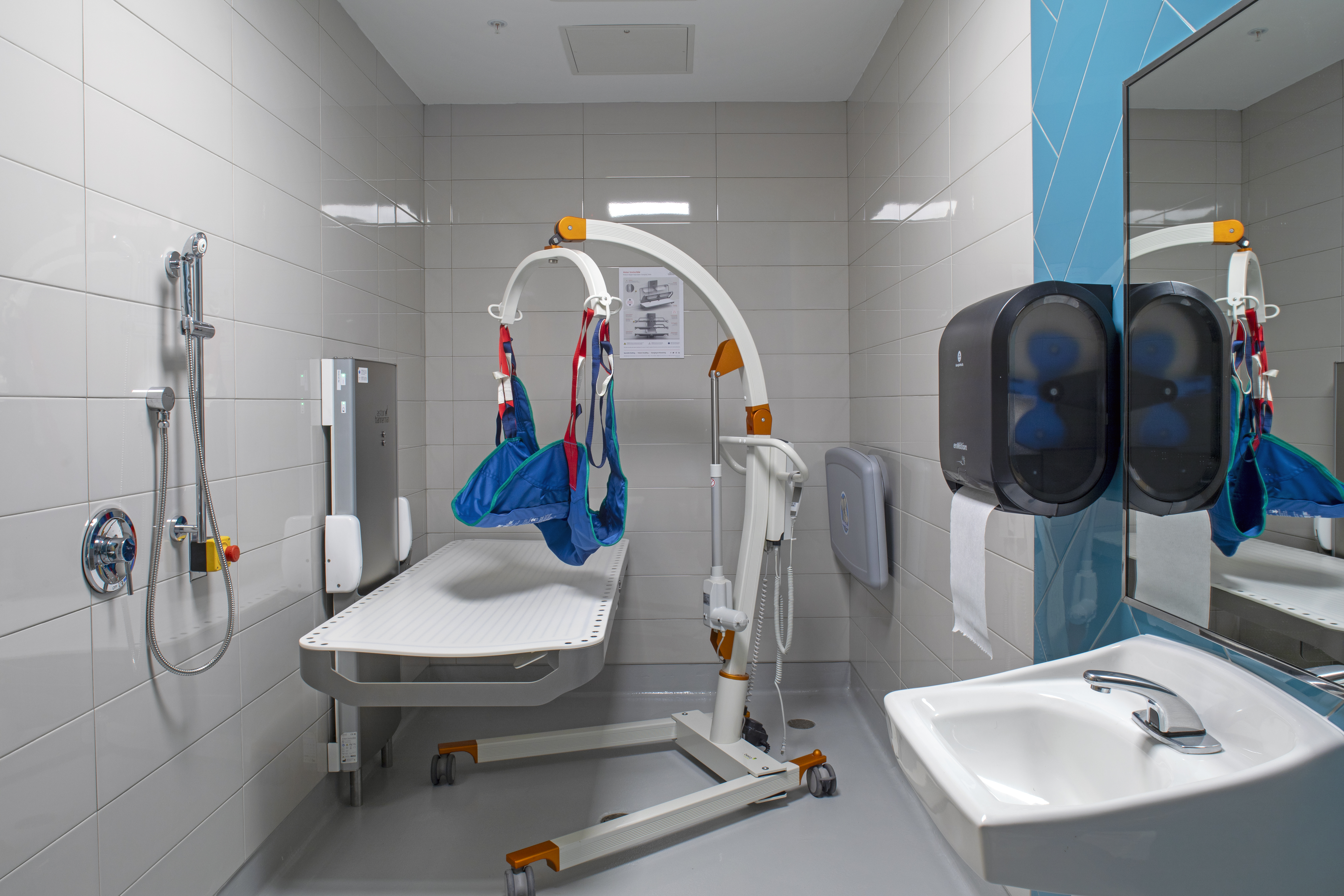February 13, 2025
Ensuring Equitable Mobility: Changing Facilities Now Required by Law in Public Buildings Across Maryland
Ensuring everyone has access to the services they need in public and commercial spaces is why ADA compliance is truly important. It’s essential we design inclusive spaces where everyone feels welcome and supported.
For professionals responsible for facility design, understanding ADA regulations, particularly those covered under Maryland’s Changing Facilities Law (Senate Bill 61, Chapter 224), such as the inclusion of changing facilities suitable for personal care for adults and children, is critical to meeting the needs of individuals with disabilities.
In this post, we’ll explore the importance of accessibility, the role of lift assist systems, and the legal requirements for compliance in changing facility designs.
ADA Regulations for Bathrooms and Changing Facilities
The Americans with Disabilities Act (ADA) provides national standards for accessible changing facility designs, ensuring that individuals with disabilities can use public restrooms and shower rooms safely and comfortably. Maryland’s Senate Bill 61 expands upon this by requiring changing facilities for both children and adults in certain public restrooms in public buildings that are newly constructed or undergo substantial renovation (costing $30,000 or more) on or after October 1, 2022.
Here are some essential ADA requirements:
- Turning radius: A minimum clear floor space of 60 inches to accommodate wheelchair users.
- Grab bars: These are required bars in showers and near toilets to provide support during transfers.
- Shower seats: Must be installed in roll-in or transfer-type showers for users who cannot stand.
- Height of fixtures: Controls for showers and sinks must be within reach and easy to use with one hand without requiring tight grasping or twisting.
- Slip-resistant surfaces: Flooring materials chosen to minimize the risk of slips and falls.
These regulations are designed to ensure that individuals with varying levels of mobility can use changing facilities independently or with minimal assistance.
The Importance of Accessibility
For businesses and public spaces, providing accessible changing facilities isn’t just a legal requirement but a commitment to inclusivity. Public restrooms must accommodate users with disabilities, ensuring they can fully participate in public life, whether at a workplace, retail location, transit station, or recreational facility.
Without ADA-compliant and Maryland-compliant facilities, individuals with disabilities face significant barriers that limit their independence and pose safety risks. Integrating lift assist systems into ADA-compliant changing room designs can make a critical difference for users, ensuring those requiring additional support can safely transition in and out of wheelchairs, shower seats, or other restroom facilities.
Technology: Lift Assist Systems in ADA-Compliant Facilities
Lift assist systems are essential in changing facilities designed for individuals with limited mobility or strength. These systems facilitate safe and comfortable transfers, reducing the risk of falls and physical strain on users and caregivers.
Some examples of lift assist technologies commonly integrated into ADA-compliant changing facilities:
- Overhead ceiling lifts: These systems consist of a track mounted to the ceiling, with a motorized sling or harness that assists individuals in transferring from one point to another. For example, used in a shower room, the lift can help users safely move from a wheelchair to a shower bench.
- Wall-mounted lifts: Mounted to the walls or floors, these mechanical devices can lift users in and out of shower seats or onto toilets. These lifts are instrumental in confined spaces where overhead lifts might not be feasible. For example, in assisted living facilities, wall-mounted lifts in the bathrooms allow staff to help residents move without physically lifting them, ensuring a safer experience for residents and caregivers.
- Portable floor lifts: These portable lifts are an alternative solution when building constraints prevent other lifts from working. A portable system is flexible across many rooms. In the picture above, a portable floor lift with a wall-mounted table is utilized for maximum flexibility in a temporary shelter facility designed by Arium AE.
Compliance with ADA and Best Practices
When designing a facility with accessible changing rooms, partnering with architects and designers who understand ADA regulations and lift assist systems’ applications is vital. Ensuring compliance with ADA and Maryland’s public building requirements is not only a legal obligation but a moral responsibility to provide safe, dignified spaces for all users.
Best practices for designing ADA-compliant changing facilities with lift assist systems include:
- Space planning: Proper layout is critical to accommodate the lift system and the turning radius required by ADA standards for wheelchair maneuverability.
- Load-bearing structures: Ensure that ceilings or walls can support the weight of lift assist systems, especially when installing overhead or wall-mounted lifts.
- Seamless integration of technology: Ensure the lift system is easy to use and improves the space’s functionality.
- Focus on user independence: While compliance is essential, the ultimate goal is to create inclusive spaces that enable independence for users.
Conclusion
Designing ADA-compliant changing facilities with lift assist technology extends beyond meeting legal requirements at Arium AE. It’s about creating equitable, safe, and empowering spaces for individuals of all abilities.
Arium AE specializes in integrating ADA and Maryland-compliant designs to meet the needs of diverse users while ensuring adherence to Senate Bill 61 and national accessibility standards. By combining innovative assistive technology with inclusive design, we create forward-thinking solutions for public and commercial environments supporting safety, dignity, and independence.
For more information on designing an ADA-compliant changing facility, contact Brian Frels by email or call 410.730.2300.
